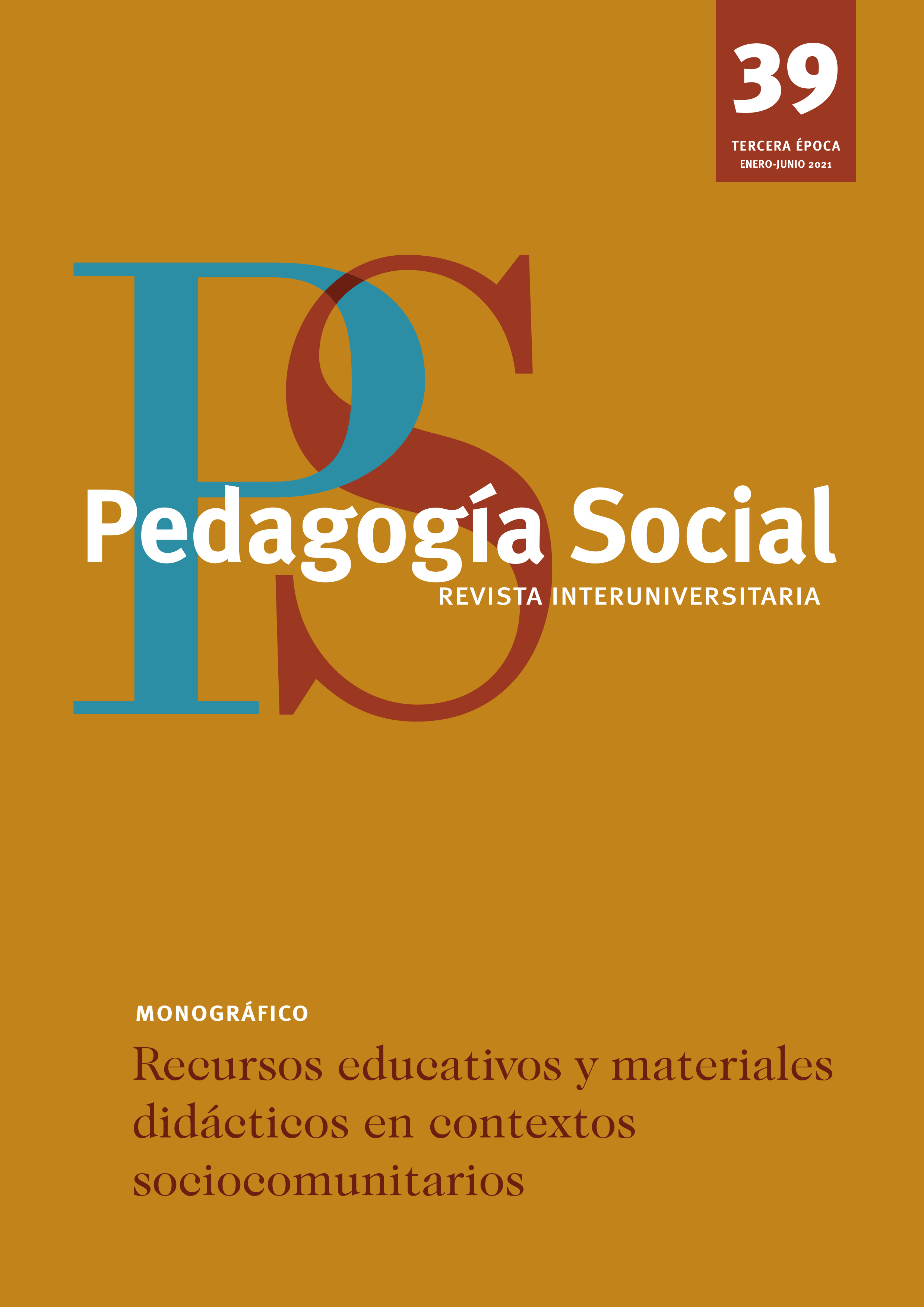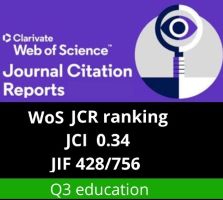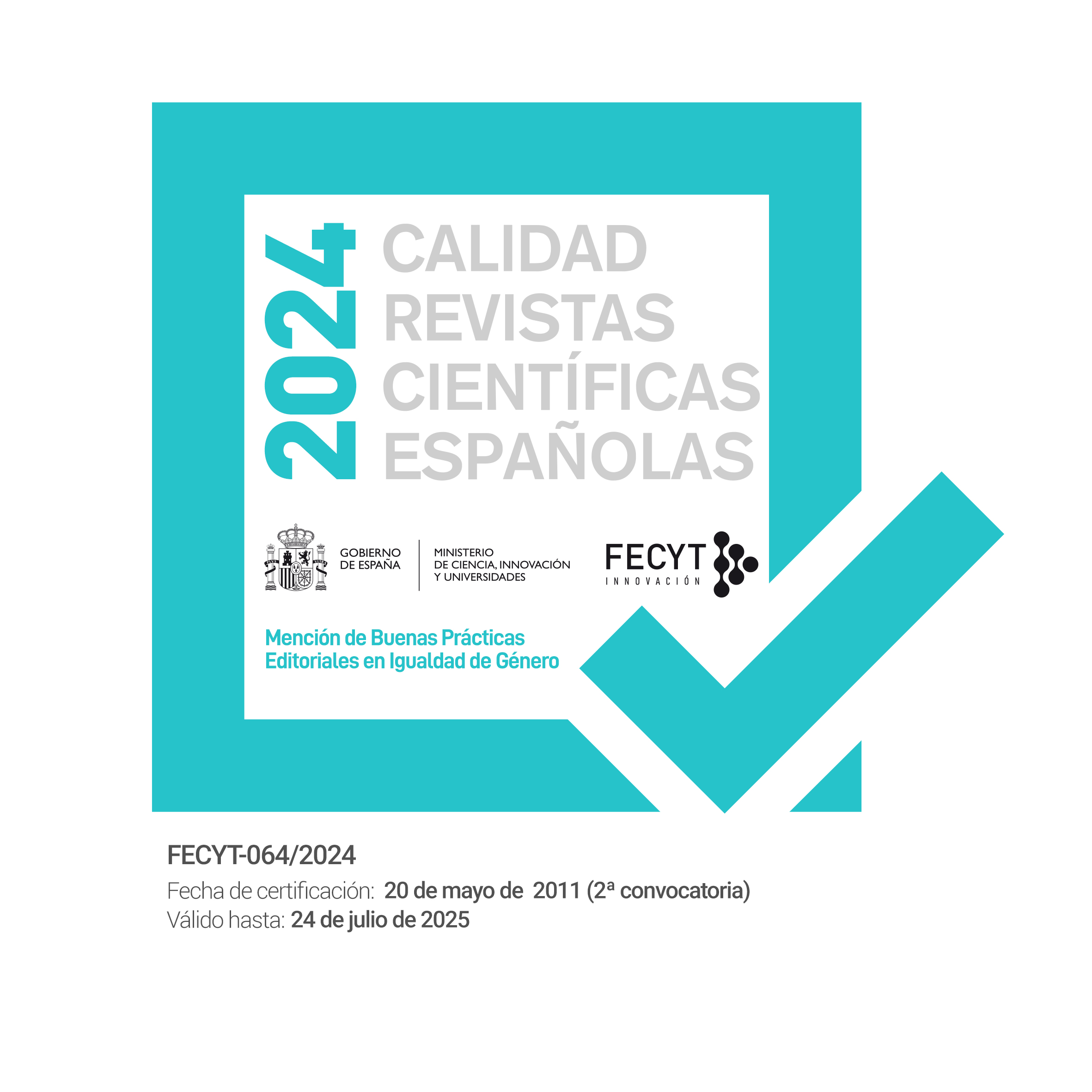Relationship of social integration and leisure experiences with bullying in primary school students
DOI:
https://doi.org/10.7179/PSRI_2021.39.11Keywords:
bullying, leisure, social integration, socio-educational intervention, primary educationAbstract
Leisure experiences are spaces for social integration. Research has shown that isolation is a relevant factor in bullying processes. If we understand bullying as an interpersonal process, the contexts of analysis have to be widened beyond classroom relationships, extending it to the study of relationships in leisure spaces. The Theory of Lifestyles and Routine Activities states that there are leisure activities that increase the likelihood of being a victim and others that reduce it. The aim of the present study is to analyses the association between leisure experiences and bullying involvement in a sample of Spanish Primary School students, through a cross-sectional design. A total of 2162 5th and 6th Primary School students participated in the study. Involvement in bullying has been measured according to the intervention roles: victim, aggressor, victim/offender, and leisure experiences. The results obtained indicate a similar pattern in both sexes in isolation, which makes them more vulnerable to victimization; reading, which reduces the likelihood of being an aggressor; and online gaming, which increases the likelihood of being a victim and aggressor. Other leisure experiences act differently according to the sex of the children. For boys, playing sports increases the likelihood of being a victim and a victim/offender. Shared leisure time with parents reduces the likelihood of victimization and increased time spent with friends, both face-to-face and online, increases the likelihood of the aggressor role. In girls, the greater use of technology as a social tool increases the probability of being a victim/offender. The results obtained in the research offer us alternatives for prevention and intervention from Social Pedagogy based on leisure
Downloads
References
Bierman, K.L. (2004). Peer rejection. Developmental, processes and intervention strategies. Guilford Press.
Buswell, L., Zabriskie, R.B., Lundberg, N. & Hawkins, A.J. (2012). The relationship between father involvement in family leisure and family functioning: The importance of daily family leisure. Leisure Sciences, 34(2), 172-190. https://doi.org/10.1080/01490400.2012.652510
Caballo, B., & Gradaille, R. (2008). La educación social como práctica mediadora en las relaciones escuela-comunidad local. Revista Interuniversitaria de Pedagogía Social, 15, 45-55.
Calvete E., Fernández-González L., González-Cabrera J.M., & Gámez-Guadix M. (2018). Continued bullying victimization in adolescents: Maladaptive schemas as a mediational mechanism. Journal of Youth and Adolescence, 47, 650-660. https://doi.org/10.1007/s10964-017-0677-5
Caride, J.A., Lorenzo, J.J., & Rodríguez-Fernández, M.A. (2012). Educar cotidianamente: el tiempo como escenario pedagógico y social en la adolescencia. Pedagogia Social. Revista Interuniversitaria, 20, 19-60.
Casas, J.A., del Rey, R., & Ortega-Ruiz, R. (2016). Entornos virtuales: beneficios y riesgos entre los adolescentes y jóvenes. En S. Yubero, E. Larrañaga, & R. Navarro (eds.), La violencia en las relaciones humanas: contextos y entornos protectores del menor (pp. 75-92). Ediciones de la Universidad de Castilla-La Mancha.
Castillo-Rodríguez, G., Picazo, C., & Gil-Madrona, P. (2018). Dinamización del recreo como resolución de conflictos y participación en actividades físico-deportivas. Revista Electrónica Educare, 22(2). http://dx.doi.org/10.15359/ree.22-2.14
Chacón, R., Castro, M., González-Campos, G., & Zurita, F. (2018). Victimización en la escuela, ocio digital e irritabilidad: análisis mediante ecuaciones estructurales. RELIEVE, 24(1). http://doi.org/10.7203/relieve.24.1.12614
Chamarro, A., Carbonell, X., Manresa, J.M., Muñoz-Miralles, R., Ortega-González, R., López-Morrón, M. R., & Toran-Monserrat, P. (2014). El Cuestionario de Experiencias Relacionadas con los Videojuegos (CERV): Un instrumento para detectar el uso problemático de videojuegos en adolescentes españoles. Revista Adicciones, 26(4), 303-311.
Cho, S., & Wooldredge, J. (2017). Lifestyles, informal controls, and youth victimization risk in South Korea and the United States. Journal of Child and Family Studies, 27, 1358-1371. https://doi.org/10.1007/s10826-017-0973-4
Cho, S., Wooldredge, J., & Park, C.S. (2016). Lifestyles/routine activities and bullying among South Korean youths. Victims and Offenders, 11(2), 285-314. https://doi.org/10.1080/15564886.2014.982235
Choi, K.S., Earl, K., Lee, J.R., & Cho, S. (2019). Diagnosis of cyber and non-physical bullying victimization: A lifestyles and routine activities theory approach to constructing effective preventative measures. Computers in Human Behavior, 92, 11-19. https://doi.org/10.1016/j.chb.2018.10.014
Cohen, E. (1991). Leisure, the last resort: a comment. En, B.L. Driver, P.J. Brown, & G.L. Peterson, Benefits of leisure. Venture.
Cohen, L.E., & Felson, M. (1979). Social change and crime rate trends: A routine activity approach. American Sociological Review, 44(4), 588-608. https://doi.org/ 10.2307/2094589
Cohen, L.E., Kluegel, J.R., & Land, K.C. (1981). Social inequality and predatory criminal victimization: An exposition and test of a formal theory. American Sociological Review, 46(5), 505-524. https://doi.org/10.2307/2094935
Cook, C.R., Williams, K.R., Guerra, N., Kim, T., & Sadek, S. (2010). Predictors of bullying and victimization in childhood and adolescence: A meta analytic investigation. School Psychology Quarterly, 25, 65-83. https://doi.org/10.1037/a0020149
Coplan, R.J., & Bowker, C. (Eds.) (2014). The handbook of solitude.Psychological perspectives on social isolation, social withdrawal, and being alone. John Wiley & Sons.
Dapía, M.D., Fernández-González, M.R. (2018). Educación social y escuela en España. A propósito de la formación e inserción laboral. Revista Iberoamericana de Educación, 76, 209-228.
De la Torre-Luque, A., & Valero-Aguayo, L. (2013). Factores moduladores de la respuesta agresiva tras la exposición a videojuegos violentos. Anales de Psicología, 29(2), 311-318.
Díaz-Aguado, M. J. (2006). El acoso escolar y la prevención de la violencia desde la familia. Dirección General de Familia.
Fernández-Montalvo, J., Peñalba, A., & Irazabal, I. (2015). Internet use habits and risk behaviours in preadolescence. Comunicar, 44, 113-121. https://doi.org/10.3916/C44-2015-12
Fulkerson, J.A., Story, M., Mellin, A., Leffert, N., Neumark-Sztainer, D., & French, S.A. (2006). Family dinner meal frequency and adolescent development: relationships with developmental assets and high-risk behaviors. Journal of Adolescent Health, 39, 337-345. https://doi.org/10.1016/j.jadohealth.2005.12.026
Fúster, H., Chamarro, A., Carbonell, X., & Vallerand, R.J. (2014). Relationship between passion and motivation for gaming in Massively Multiplayer Online Role-Playing Games. Cyberpsychology, Behavior, & Social Networking, 17, 292-297. https://doi.org/10.1089/cyber.2013.0349
Garaigordobil, M. (2005). Diseño y evaluación de un programa de intervención socioemocional para promover la conducta prosocial y prevenir la violencia. MEC.
Garaigordobil, M. (2015). Cyberbullying en adolescentes y jóvenes del País Vasco: cambios con la edad. Anales de Psicología, 31, 1069-1077.
Garaigordobil, M., & Machimbarrena, J.M. (2017). Stress, competence, and parental educational styles in victims and aggressors of bullying and cyberbullying. Psicothema, 29, 335-340. https://doi.org/10.7334/ psicothema2016.258
García-Castilla, F.J., Melendro, M., & Blaya, C. (2018). Preferencias, renuncias y oportunidades en la práctica de ocio de los jóvenes vulnerables. Pedagogía Social. Revista Interuniversitaria, 31, 21-32. http://dx.doi.org/10.7179/PSRI_2018.31.02
García-Fernández, C.M., Romera, E.M., Ortega-Ruiz, R. (2017). Cyberbullying en Educación Primaria: Factores explicativos relacionados con los distintos roles de implicación. Psychology, Society, & Education, 9, 251-262. https://doi.org/10.25115/psye.v9i2.697
García-Fernández, C.M., Romera-Félix, E.M., & Ortega-Ruiz, R. (2016). Relaciones entre el bullying y el cyberbullying: Prevalencia y co-ocurrencia. Pensamiento Psicológico, 14, 49-61. https://doi.org/10.11144/Javerianacali.PPSI14-1.rbcp
Giménez, A.M., Luengo, J.A., & Bartrina, M.J. (2017). What are young people doing on internet? Use of ICT, parental supervision strategies and exposure to risks. Electronic Journal of Research in Educational Psychology, 15, 533-552. https://doi.org/10.14204/ejrep.43.16123
Goldbach, J.T., Sterzing, P.R., & Stuart M.J. (2017). Challenging conventions of bullying thresholds: Exploring differences between low and high levels of bully-only, victim-only, and bully-victim Roles. Journal of Youth and Adolescence, 47, 586-600. https://doi.org/10.1007/s10964-017- 0775-4
Gradaille, R., Varela, L., & de Valenzuela, A. (2016). Preocupaciones del profesorado y de las familias sobre los tiempos escolares y de ocio del alumnado de Educación Secundaria Postobligatoria. Revista Interuniversitaria de Formación del Profesorado, 86 (2), 49-62.
Hall, W.J. (2016). Initial development and validation of the BullyHARM: the Bullying, Harassment, and Aggression Receipt Measure. Psychology in the Schools, 53, 984-1000. https://doi.org/10.1002/pits.21957
Hardy, L.L., Booth, M.L., & Okely, A.D. (2007). The reliability of the adolescent sedentary activity questionnaire (ASAQ). Preventive Medicine, 45, 71-74. https://doi.org/10.1016/j.ypmed. 2007.03.014
Herrera-López, M., Romera, E., & Ortega-Ruiz, R. (2017). Bullying y cyberbullying en Colombia; coocurrencia en adolescentes escolarizados. Revista Latinoamericana de Psicología, 49, 163-172. https://doi.org/10.1016/j.rlp.2016.08.001
Hinduja, S., & Patchin, J.W. (2013). Social influences on cyberbullying behaviors among middle and high school students. Journal of Youth and Adolescence, 42, 711-722. https://doi.org/10.1007/s10964-012-9902-4
Hinduja, S., & Patchin, J.W. (2015). Bullying beyond the schoolyard: preventing and responding to cyberbullying. Sage Publications.
Holt, M.K., Green, J.G., Tsay-Vogel, M, Davidson, J., & Brown, C. (2016). Multidisciplinary approaches to research on bullying in adolescence. Adolescent Research Review, 2. https://doi.org/10.1007/s40894-016-0041-0
Indias, S., & De Paúl, J. (2016). Spanish adaptation of social withdrawal motivation and frequency scales. Psicothema, 28, 487-494. https://doi.org/10.7334/psicothema2016.18
INE (2017). Encuesta sobre equipamiento y uso de tecnologías de la información y comunicación en los hogares. INE. http://www.ine.es/jaxi/Datos.htm?path=/t25/p450/base_2011/a2017/l0/&file=01005.px
Kim, J., Rapee, R.M., Oh, K.J., & Moon, H. (2008). Retrospective report of social withdrawal during adolescence and current maladjustment in young adulthood: Cross-cultural comparisons between Australian and South Korean students. Journal of Adolescence, 31, 543-563. http://dx.doi.org/10.1016/j.adolescence.2007.10.011
Kowalski, R., Limber, S., & Agatston, P. (2010). Cyber Bullying: El acoso escolar en la era digital. Desclée de Brower.
Ladd, G.W., Ettekal, I., & Kochenderfer-Ladd, B. (2017). Peer victimization trajectories from Kindergarten through High School: Differential pathways for children’s school engagement and achievement? Journal of Educational Psychology, 109, 826-841. http://dx.doi.org/10.1037/edu0000177
Larrañaga, E., Navarro, R., & Yubero, S. (2018). Factores socio-cognitivos y emocionales en la agresión del ciberacoso. Comunicar, 56, 19-28. https://doi.org/10.3916/C56-2018-02
Lazcano, I., & Madariaga, A. (2016). El valor del ocio en la sociedad actual. Instituto de Estudios del Ocio. http://Dialnet-ElValorDelOcioEnLaSociedadActual-6149004.pdf
Méndez, I., Ruiz-Esteban, C., & López-García, J.J. (2017). Risk and protective factors associated to peer school victimization. Frontiers in Psychology, 8, 441. https://doi.org/10.3389/fpsyg.2017.00441
Monjas, R., Ponce, A., & Gea, J.M. (2015). La transmisión de valores a través del deporte. Deporte escolar y deporte federado: relaciones, puentes y posibles transferencias. Retos, 28, 276-284.
Monks, C.P., & Smith, P.K. (2011). School bullying: Nature and prevention. En M. Veisson, M. Maniganayake, E. Hujala, E. Kikas, & P.K. Smith (Eds.), Global perspectives in early childhood education: Diversity, challenges and possibilities. (pp. 457-473). Peter Land.
Moyano, N., Ayllón, E., Antoñanzas, J.L., & Cano, J. (2019). Children’s social integration and low perception of negative relationships as protectors against bullying and yyberbullying. Frontiers in Psychology, 10, 643. http://dx.doi.org/10.3389/fpsyg.2019.00643
Muñoz-García, F. (2009). El Impacto de las pantallas: televisión, ordenador y videojuegos. Pediatría Integral, 13, 881-890.
Navarro, R., Yubero, S., & Larrañaga, E. (2015). Psychosocial risk factors for involvement in bullying behaviors: Empirical comparison between cyberbullying and social bullying victims and bullies. School Mental Health, 7, 235-248. https://doi.org/10.1007/s12310-015-9157-9
Navarro, R., Larrañaga, E, & Yubero, S. (2018). Differences between preadolescent victims and non-victims of cyberbullying in cyber-relationship motives and coping strategies for handling problems whit peers. Current Psychology, 37, 116-127. doi: 10.1007/s12144-016-9495-2
Offer, S. (2013). Family time activities and adolescents’ emotional well-being. Journal of Marriage and Family, 75, 26-41. https://doi.org/10.1111/j.1741-3737.2012.01025.x
Ortega-Nuere, C., Lazcano, I., & Manuel-Baptista, M. (2015). Espacios de ocio para jóvenes, de la monitorización a la autogestión. Pedagogía Social. Revista Interuniversitaria, 25, 69-89.
Ovejero, A. (2018). El aprendizaje cooperativo crítico: mucho más que una mera técnica pedagógica. Pirámide.
Ovejero, A. (2019). Aprendizaje cooperativo: un instrumento eficaz para solucionar los principales problemas escolares. En A. Ovejero, J.F. Morales, & S. Yubero (Eds.), Psicología social de la educación (pp. 197-229). UOC.
Ponce de León, A., Sanz-Arazuri, E., & Valdemoros, M.A. (2015). Ocio familiar y actividad física en estudiantes de bachillerato ¿alianza, rivalidad o independencia? Pedagogia Social. Revista Interuniversitaria, 25, 51-68.
Rey-López, J.P., Vicente-Rodríguez G., Ortega, F.B., Ruiz, J.R., Martínez-Gómez, D., De Henauw, S, & Moreno, L.A. (2010). Sedentary patterns and media availability in European adolescents: The HELENA Study. Preventive Medicine, 51, 50-55. https://doi.org/10.1016/j.ypmed.2010.03.013
Rodríguez-Álvarez, J.M., Navarro, R., & Yubero, S. (2021). Bullying/cyberbullying en quinto y sexto curso de educación primaria: diferencias entre contextos rurales y urbanos. Psicología Educativa. https://doi.org/10.5093/psed2021a18
Sánchez-Carbonell, X., Beranuy, M., Castellana, M., Chamarro, A., & Oberst, U. (2008). La adicción a internet y al móvil: ¿moda o trastorno? Adicciones, 20, 149-160.
Sánchez-García, S., & Yubero, S. (2015). Función social de las bibliotecas públicas: nuevos espacios de aprendizaje y de inserción social. Profesional de la Información, 24(2), 103–112. https://doi.org/10.3145/epi.2015.mar.03
Schreck, C.J., & Fisher, B.S. (2004). Specifying the influence of family and peers on violent victimization: extending routine activities and lifestyles theories. Journal of Interpersonal Violence, 19, 1021-1041. https://doi.org/10.1177/0886260504268002
Smith, P.K., Mahdavi, J., Carvalho, C., Fisher, S., Russell, S., & Tippett, N. (2008). Cyberbullying: Its nature and impact in secondary school pupils. Journal of Child Psychology and Psychiatry, 49, 376-385. https://doi.org/10.1111/j.1469-7610.2007.01846.x
Stevens V, De Bourdeaudhuij I, Van Oost P. (2002). Relationship of the family environment to children’s involvement in bully/victim problems at school. Journal of Youth and Adolescence, 31, 419-428.
Tejeiro, R., Pelegrina, M., & Gómez, J.L. (2009). Efectos psicosociales de los videojuegos. Comunicación, 7, 235-250.
Twyman, K., Saylor, C., Taylor, L.A., & Comeaux, C. (2010). Comparing children and adolescents engaged in cyberbullying to matched peers. Cyberpsychology, Behavior, and Social Networking, 13(2), 195-199. https://doi.org/10.1089/cyber.2009.0137
UNESCO (2019). Behind the numbers: Ending school violence and bullying. Organización de las Naciones Unidas para la Educación, la Ciencia y la Cultura. http://bit.ly/31AV4pI
Valadez, I., & Martín del Campo, S. (2008). El trabajo participativo con docentes: Una búsqueda de propuestas para enfrentar el maltrato entre iguales. Revista Mexicana de Investigación Educativa, 13, 87-111.
Valdemoros, M.A., Alonso-Ruiz, R.A., & Codina, N. (2018). Actividades de ocio y su presencia en las redes sociales en jó¬venes potencialmente vulnerables. Pedagogía Social. Revista Interuniversitaria, 31, 71-80. https://doi.org/10.7179/PSRI_2018.31.06
Valencia, A., Devís, J., & Peiró, C. (2016). Implicación en actividades sedentarias y rendimiento académico en adolescentes: diferencias según variables sociodemográficas, Cultura y Educación, 28, 301-327. http://dx.doi.org/10.1080/11356405.2016.1158451
Veenstra, R., Lindenberg, S., Munniksma, A., & Dijkstra, J. (2010). The complex relation between bullying, victimization, acceptance and rejection: Giving special attention to status, affect and sex differences. Child Development, 81, 480-486. https://doi.org/10.1111/j.1467-8624.2009.01411.x
Villora, B., Larrañaga, E., Yubero, A., Alfaro, A., & Navarro, R. (2020). Relations among poly-bullying victimization, subjective well-being and resilience in a sample of late adolescents. International Journal of Environmental Research and Public Health, 17, 590. doi:10.3390/ijerph17020590
Yubero, S., Larrañaga, E., & Navarro, R. (2018). Los padres ante el ciberacoso: factores de protección. Bordón, 70, 141-157. https://doi.org/10.13042/Bordon.2018.58169
Yubero, S., Ovejero, A. y Larrañaga, E. (2010). Apoyo social percibido en el contexto escolar y victimización entre iguales durante la adolescencia. Revista de Psicología Social, 25(3), 283-293.
Zurita, F., Castro, M., & Chacón, R. (2018). Análisis de la influencia de la modalidad deportiva sobre la victimización en escolares de Primaria. Educación, Sport, Health and Physical Activity, 2(1), 2-15. http://hdl.handle.net/10481/48262
Zych, I., Farrington, D.P., & Ttofi, M.M. (2018). Protective factors against bullying and cyberbullying: a systematic review of meta-analyses. Aggression and Violent Behavior, 45, 4-19. https://doi.org/10.1016/j.avb.2018.06.008
Downloads
Published
Issue
Section
License
Copyright (c) 2021 Pedagogía Social. Revista Interuniversitaria

This work is licensed under a Creative Commons Attribution-NonCommercial-ShareAlike 4.0 International License.
Copyright and right to archive
The published version of the articles can be self-archived by their authors in open access institutional and thematic repositories. However, Pedagogía Social. Revista Interuniversitaria must authorize partial or global reutilisation on new papers or publications.
Published papers must be cited including the title of the journal Pedagogía Social. Revista Interuniversitaria, issue, pages and year of publication
Ethical responsibilities
Pedagogía Social. Revista Interuniversitaria does not accept any material that has been previously published in other documents or publications. Authors are responsible for obtaining the required permissions for partial or global reproduction any material from other publications, and to correctly quote its origin.
Pedagogía Social. Revista Interuniversitaria is obliged to detect and report fraudulent practices.
Only those who have intellectually contribute to the development of the paper must appear as authors.
The journal expects authors to declare any commercial partnership that might entail a conflict of interest with respect to the submitted article.
Authors must mention in the article, preferably in the “methodology” section, that the procedures used during the samplings and controls have been made after getting informed consent.
The journal will not use any received contribution in a way other than the goals described in these guidelines.
Copyright Notice
© Pedagogía Social. Revista Interuniversitaria. Papers published in both the printed and online versions of this Journal are property of Pedagogia Social. Revista Interuniversitaria, being required to cite the source in any partial or total reproduction.
Unless otherwise stated, all content of this electronic journal is distributed under "Creative Commons Attribution-Non commercial 3.0 Spain" (CC-by-nc) license for use and distribution. The informative version and the legal text of this license is available here. This has to be expressly stated in this way when necessary.






